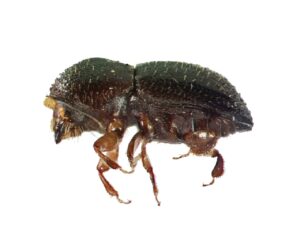[imagesource: Douglas Blackiston & Sam Kriegman]
Scientists have found a couple of living, organic robots able to reproduce in a way never seen before from any animal or plant on the planet.
Yep, this is an official PSA that there are now living robots able to make babies.
These tiny living robots are called xenobots, made from the stem cells of the African clawed frog (Xenopus laevis), and are less than a millimetre in size.
A couple of experiments were done in 2020, which showed the ability of these tiny blobs to move, sense their environment, work together in groups, self-heal, self assemble, and now, amazingly, reproduce.
That makes them the first multicellular organisms found to reproduce in this new way, which is basically by clumping loose cells together to create “children”.
Josh Bongard, a computer science professor and robotics expert at the University of Vermont, is the lead author of the study.
He worked alongside Michael Levin, a professor of biology and director of the Allen Discovery Center at Tufts University, as well as other colleagues.
The African clawed frog, albino version, for your consideration:

Before I go on to explain more about the baby-making process, you’re probably wondering what makes these xenobots robots and not just organic organisms.
Bongard has the answer via CNN:
“Most people think of robots as made of metals and ceramics but it’s not so much what a robot is made from but what it does, which is act on its own on behalf of people,” said Bongard…
“In that way it’s a robot but it’s also clearly an organism made from genetically unmodified frog cell.”
Alright, moving on to the details about how their babies are made, as per New Scientist:
When the cells are brought together in clumps, they form spheres of around 3 000 cells within five days. Each clump is around half a millimetre wide and covered in minuscule hair-like structures. These act like flexible oars, propelling the xenobots forward in corkscrew paths, says Bongard.
The team noticed that individual clumps of cells appeared to work together in a swarm, pushing other loose cells in the dish together. The resulting piles of cells gradually formed new xenobots.
Further experiments revealed that groups of 12 xenobots placed in a dish of around 60 000 single cells appear to work together to form either one or two new generations.
“One [xenobot] parent can begin a pile and then, by chance, a second parent can push more cells into that pile, and so on, generating the child,” says Bongard.
Look at them go:
The team then turned to artificial intelligence to create additional generations of xenobots:
The supercomputer came up with a C-shape that resembled Pac-Man, the 1980s video game.
They found it was able to find tiny stem cells in a petri dish, gather hundreds of them inside its mouth, and a few days later the bundle of cells became new xenobots.
The Pac-Man-shaped xenobots produced up to four generations, which was double that generated by spherical xenobot parents.
The discovery is still very much in its early days, but molecular biology combined with artificial intelligence could lead to some incredible uses.
These could include collecting microplastics in the oceans, inspecting root systems, regenerative medicine, as well as figuring out how exactly life on Earth began.
I am feeling some serious blob appreciation right now.
[sources:cnn&newscientist]





